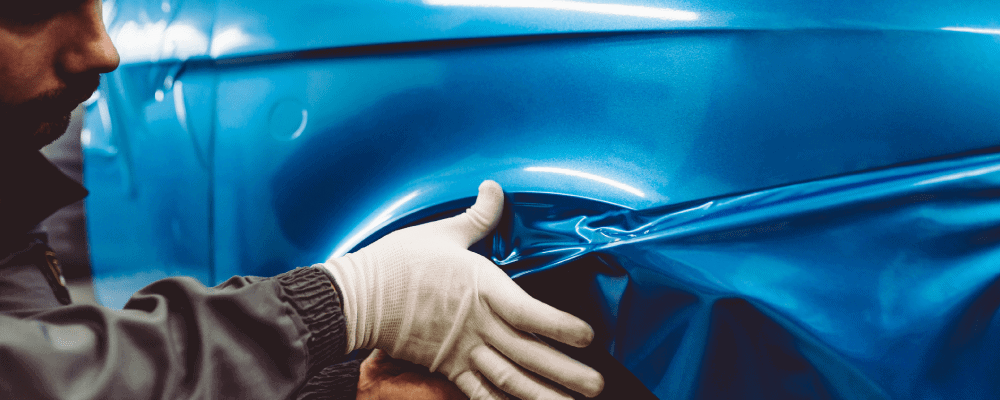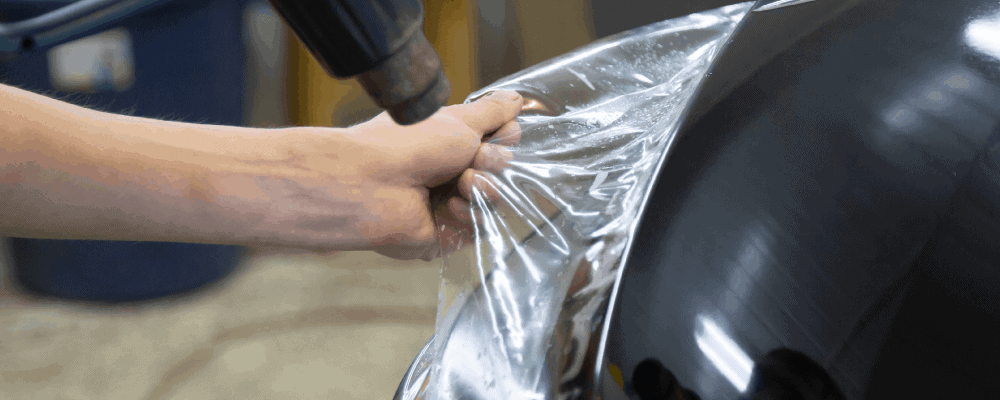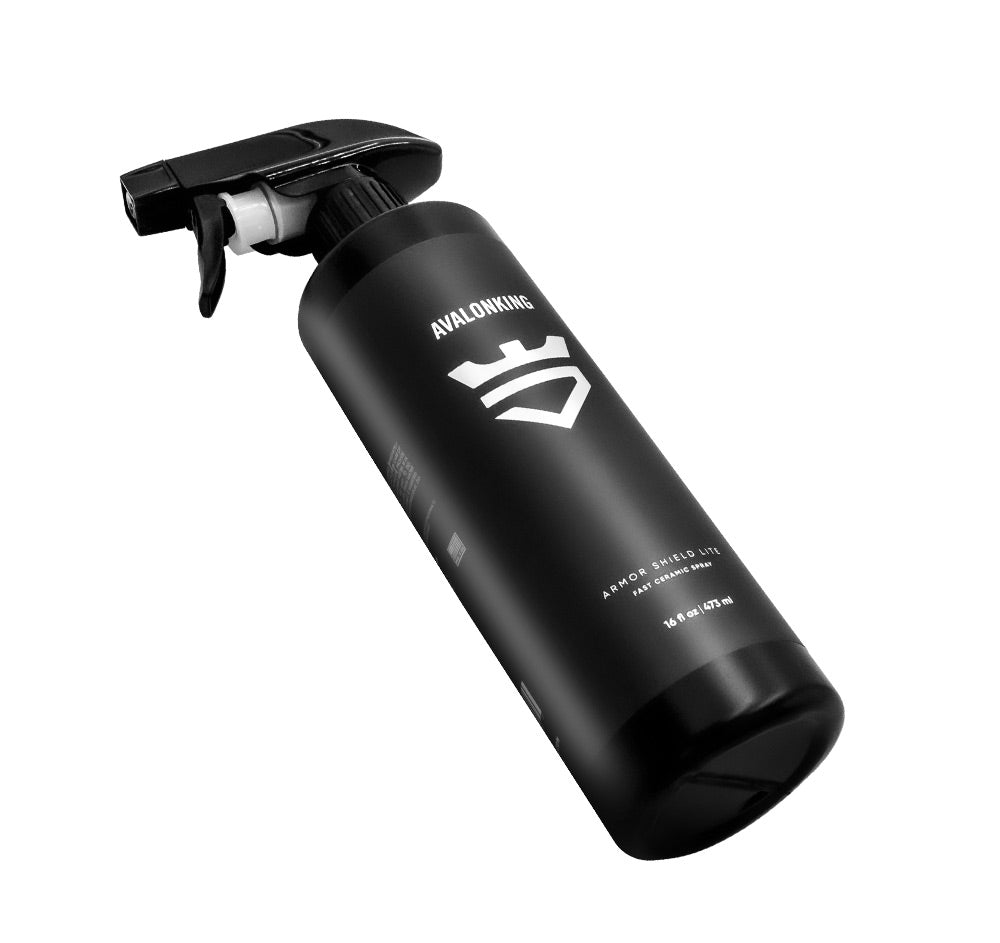I’m a huge fan of vinyl. It’s flexibility of design, durability, and ability to protect paint from damage is legendary. While the old school hot rodder in me prefers a deep paint job, that you can stick your — whatever into, vehicle wraps and graphics or a car wrap is a great option to consider.
The average vinyl wrap (like on an entire car) will cost more than $1,000 if applied by a professional. Some of them are north of $3,000 – especially when special materials or designs are printed on the wrap.
So how do you protect a car wrap from wear and tear, exposure to UV rays, bug splatters, bird droppings and other sources of contamination?
Well – we’ve got the secret sauce, but we’ll get into that later. Keeping your car wrap in good condition requires some elbow grease, making smart decisions, and using the right products.
This is what we’ll explore today. In today’s AvalonKing blog, we’ll explore the ins and outs of maintaining a car wrap. The tips below are applicable to any vinyl material – but not exclusive to paint protection film or PPF. For PPF tips, contact your manufacturer or authorized installation center.
Let’s kick the tires and light the fires Big Daddy!
What is a Vinyl Car Wrap?

If you’re reading this article, I’m going to assume you know what a car wrap is, how it’s made, applied, and even what it does to protect your vehicle surfaces. However, for those that discovered this article thanks to Google, here is some valuable data to consider.
A car wrap is comprised of heavy-duty vinyl, combined with polyvinyl chloride (PVC) and has an adhesive backing. It’s an exceptionally strong material that can protect the surface of any solid object including paint, wheels, grilles, rear spoilers, and more.
The flexibility of a vinyl wrap is made possible with the addition of plasticizers. This permits the material to stretch to fit on curves, edges, and to withstand expansion or contraction due to sunlight exposure or freezing temperatures.
Is a Car Wrap Self-Healing?

Nope – that’s paint protection film you’re thinking about. A vinyl wrap can protect your ride from small rocks, but if it’s damaged, you’ll have to get it repaired. A PPF or paint protection film is similar with a vinyl wrap (in the way it’s applied).
However, it’s made from space-age materials that are self-healing. Basically, when the PPF is struck with a rock, it absorbs the shock. When heat (like a hair dryer – not a flame) is introduced to the surface, the PPF “heals.”
How Long Does a Vinyl Wrap Last?
Believe it or not, a high-quality vinyl wrap can last upwards to seven years. There are several elements that contribute to longevity or shortening the lifespan. The first is routine maintenance and care – which is what we’ll explore below.
The second is vehicle storage. If your vehicle is a garage queen, the wrap will last longer due to less exposure to the sun and other weather elements.
Tips for Caring for Your Car Wrap

It is always recommended to seek the advice of the vinyl wrap installation company on proper care and maintenance. There are a few reasons for this. First, it’s to protect your warranty. Many vinyl installation centers have strict restrictions on the products, techniques, and procedures used to wash and care for their vinyl.
Second, it provides a paper trail of information. If you follow their instructions – to the letter – and they have issues with covering warranties, you can throw it in their face.
Third, there are different grades of vinyl wrap – and not all of them have the same care and maintenance tips.
The six FAQs below are general guidelines – not the law. Some vinyl graphics are special materials or have specific rules for care – so always defer to the manufacturer. K?
How Often Should a Car Wrap Be Washed?

Generally, a vehicle wrap, or vinyl graphics should be washed on a weekly or bi-weekly basis. The goal of any car wash is to remove pollutants, contaminants, or debris that damages the vinyl material. Washing a vinyl wrap frequently can accelerate the breakdown of design or colors on the surface.
However, the most important thing to remember is how and what car wash soap to use.
Like any other protectant, whether it’s ceramic coating or vinyl, the best car wash to use are products that are pH neutral, does not contain wax or any other ‘protective’ agents.
If you’re going to apply protective products on top of a vinyl wrap, do it the correct way – instead of hoping some of that wax in the car wash sticks.
How Should a Car Wrap Be Washed?
The reliable two-bucket method of car washing is your best bet for washing a car wrap. This ensures that you remove the dirt, debris, and crap on the wrap, without damaging it with automatic machines or pressure washing.
Speaking of those two things, don’t bring your car through an automated brushless car wash. I mean, you can do it, but why would you risk the damage? Brushes – like those in the automatic car washing facilities are a HELL NO.
You should also avoid using high-pressure hoses to wash or rinse the wrap. Again, some high-pressure systems are OK to use. It’s mainly based on the ‘pressure’ used. If you’re going to use a pressure washer, make sure to ask your vinyl wrap manufacturer what PSI the system should be set.
What is the Best Product to Use for Spot Cleaning a Wrap?

Most vinyl wrap installation experts recommend using waterless wash products or hot soapy water. However, there are some that believe it’s OK to use degreasers or isopropyl alcohol that is diluted with distilled water.
There are some recommended steps for using any spot cleaning product on a car vinyl wrap. First, never use on warm surfaces. Spraying a cleaner on warm vinyl decals can cause some damage to the wrap.
They recommend using spray cleaners on cool to the touch vinyl materials, in the shade, or inside a garage – once the surface has cooled.
What Happens when You Spill Gasoline or Oil on a Vinyl Wrap?
Anytime gasoline or oil is spilled onto a surface, damage can start. Gasoline specifically is a high-percentage solvent, which can damage soft materials like partial wraps or vinyl car wraps.
As such, it is recommended to wipe off gasoline spills or oil spills immediately. It’s always a good idea to hand wash that entire area, using the two-bucket method of car washing.
Gasoline and oils can cause staining on vinyl. So, if you spill gasoline on a wrap, grab a wet paper towel and wipe off that area with lots of water. Once you get home, hand washing of that section at the minimum is recommended.
Can You Park Vinyl Wrapped Cars Outdoors for Long Periods?

We mentioned above which products are OK for cleaning or caring for car vinyl wraps. So, what are the never use products?
Well – it’s simple when you think about it. Here are some products that should never be used to care for vinyl.
- Solvent-based cleaners
- Oil-based cleaners
- Kitchen or Bathroom Cleaners
- Oven Cleaners
- Orange Oils or Citrus-based cleaners
- Engine degreasers or high pH washes
What Products Are Best for Protecting Vinyl Wraps?

The biggest threat to premature wear on vinyl products, whether it’s a full car wrap or just smaller decals, is exposure to UV rays, contaminants, and harsh chemical cleaners. In order to protect your vehicle wraps, there are two ways to accomplish this.
You can keep the vehicle indoors or wrapped in a plastic bubble. Or, you can apply a semi-permanent layer of protection that is engineered to protect against the items listed below.
We just happen to know of one – it’s a nano-ceramic coating. A great DIY product that can be applied by the average car enthusiast is Armor Shield IX.
A nano-ceramic coating is comprised of SiO2 or silica dioxide. It’s basically liquid quartz – meaning that once it cures, it’s exceptionally hard. This product works on any solid and porous material, including clear coats on paint, wheels, glass, carbon fiber, vinyl lettering, fleet graphics, and of course, vehicle graphics that is applied onto cars.
Watch this video to learn how Armor Shield IX works.
When the coating is applied, is penetrates those microscopic peaks and valleys found in all porous materials. It then layers on top of the surface, flashes or initially cures in a matter of minutes, and creates an exceptionally strong layer of protection.
It makes the surface underneath protected against direct exposure to materials and environmental threats that accelerate damage to vinyl or graphics. It can also be used on paint protection film or PPF.
When it cures, it makes the surface incredibly hydrophobic, which means that bird droppings, bug guts, and tree sap is easier to remove.













13 comments
Brent
If I already have the ceramic coating on the car do I need to remove it before applying vinyl?
If I already have the ceramic coating on the car do I need to remove it before applying vinyl?
Dale Pearl
Hi Paul!
Armor Shield will not change the appearance of matte finishes nor will it add shine to the surface. Armor Shield will effectively enhance the matte pattern without adding gloss.
Hi Paul!
Armor Shield will not change the appearance of matte finishes nor will it add shine to the surface. Armor Shield will effectively enhance the matte pattern without adding gloss.
Paul Deaton
Does your ceramic coat change the look of matte or saying vinyl finishes? For example, I have a metallic black paint job with a partial matte wrap over it. Will this make my matte color blend in too much with the pain beneath it, making it harder to see the design?
Does your ceramic coat change the look of matte or saying vinyl finishes? For example, I have a metallic black paint job with a partial matte wrap over it. Will this make my matte color blend in too much with the pain beneath it, making it harder to see the design?